| Another hall has "items
which made mom's life easier!" This may have been debatable. We
started at a collection of cookers and ranges from the early 1900s. | 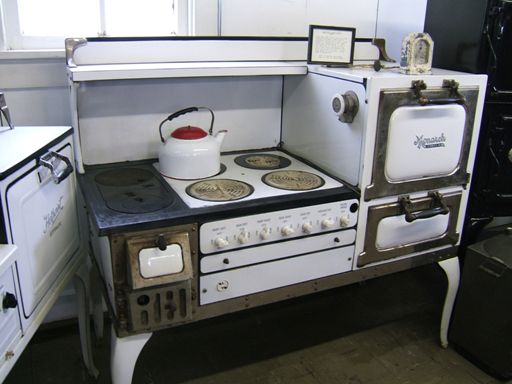 |
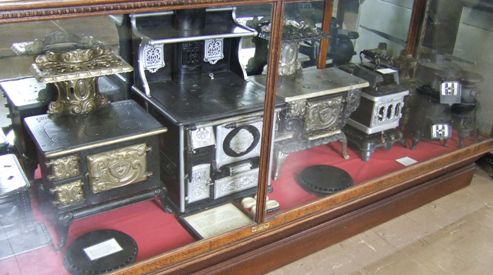 |
Because stoves were very heavy, the salesmen and shops had miniatures to
demonstrate the various models. The museum has a collection of perfect scale
models which had to be submitted when the patents were being applied for. |
| And a bigger collection
of full sized stoves, mostly wood burning. This was the primary heating in
most homes and modern versions are still popular today. | 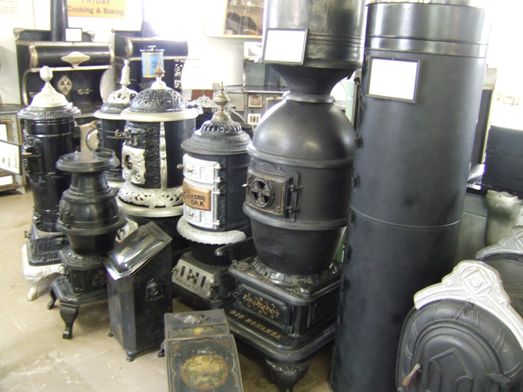 |
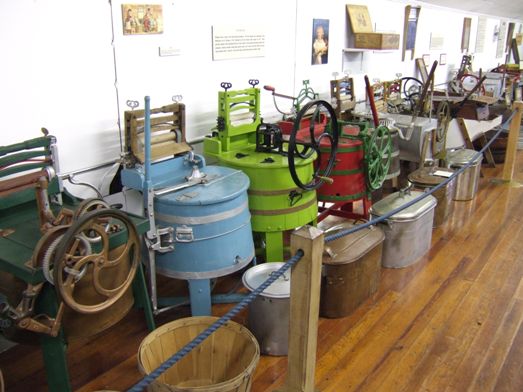 |
I suppose the washing machine was a labour saving device but one questions
how much labour was saved with some of these. The earliest ones were just
drums which could be turned by a handle to simulate scrubbing, and that
action is still the essence of how a washing machine works today. However it
is very interesting to see the evolution from the first such device in 1848.
A more recent Thor machine from the 1950s is interesting because you could
insert a rack to convert it into a dishwasher, but it doesn't seem to have
caught on. |
| American fridges have
always been huge and with the curves became quite iconic, probably on
account of the movies. Large fridges are now beginning to be more popular
elsewhere in the world. | 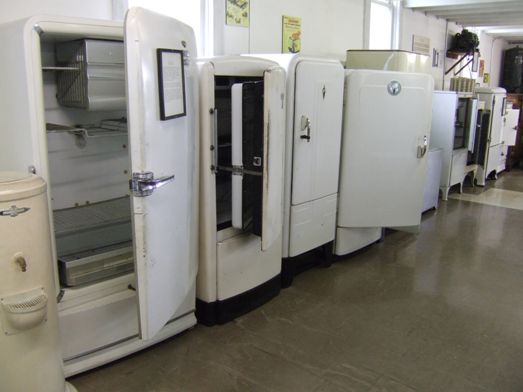 |
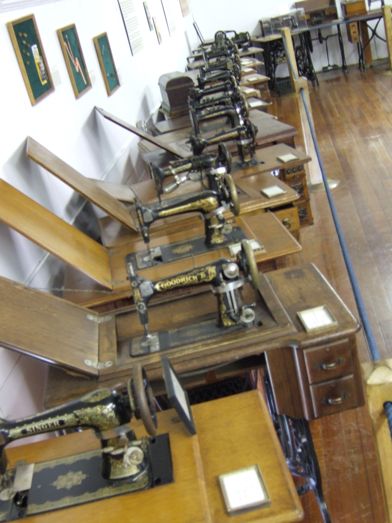 |
Equally fascinating is this collection of sewing machines. There are some
Singer machines but many other makes as well, some with beautifully crafted
sewing tables. |
| The earliest is an 1848
Howe which predates the Singer but has a flaw which caused the bobbin thread
to eventually become tangled and break. | 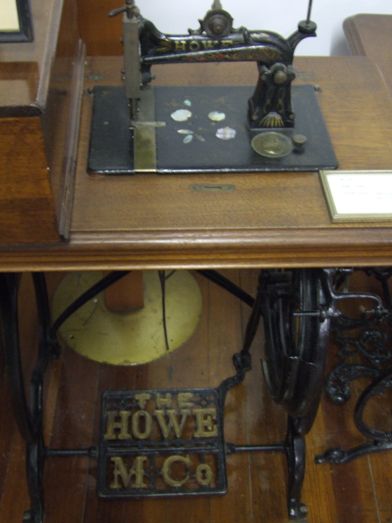 |
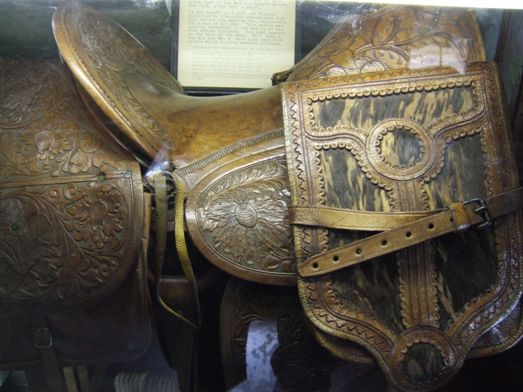 |
The next building is a log cabin and is much smaller. It was a Pony Express
station and contains memorabilia including this saddle made for Buffalo Bill
Cody when he was a Pony Express rider. The route they followed was the same
as the Mormon and Oregon trails. They disappeared with the advent of the
telegraph. |
| The penultimate building
houses a collection of collections which people have made as a hobby. For
example, there are many thousands of buttons, but most striking is this
collection (double sided) of 3600 pens and pencils - all different. | 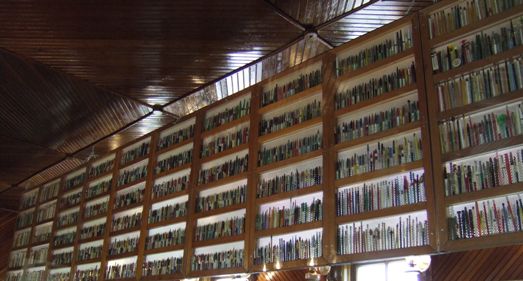 |
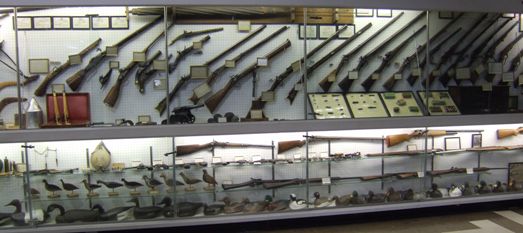 |
So back to the first building to view the half we missed at the start. This
is a collection of guns and rifles commonly owned by the settlers. As such
they are less exotic than some collections we've seen. At the bottom are
decoys used to lure ducks for the hunters. |
| At the turn of the
century many towns had tramcars in the days before development of bigger
engines allowed the bus to be developed. This tram is from Fort Collins in
Colorado. | 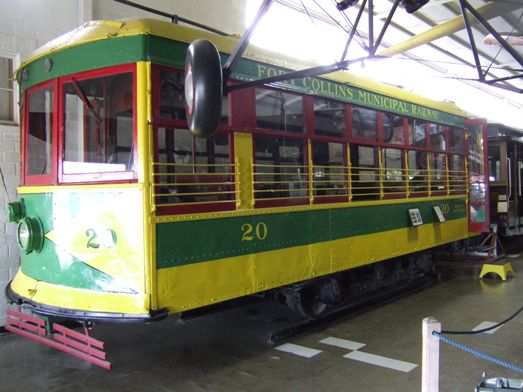 |
 |
The whole museum is collections of everyday things out in the country. Here
is a collection of small outboards for motor boats for use on the many lakes.
It includes some of the earliest invented. |
| Slightly larger engines,
this time from aircraft. For a rancher to own a small plane between the wars
and especially in the 50s was very common. There are a dozen or so engines
of different types here, some with propellers still in place. | 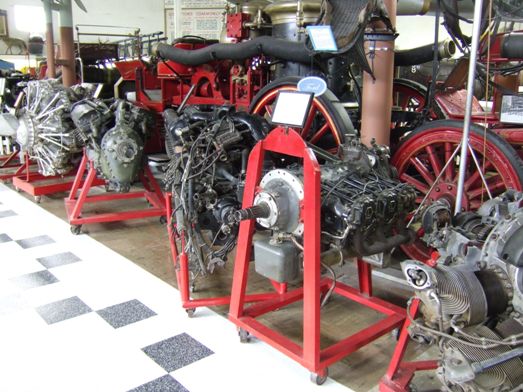 |
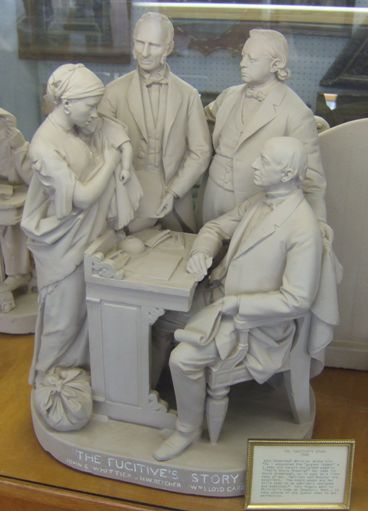 |
Finally to something completely different. John Rogers was a sculptor who
made 80 different groups from clay during his career (1859-93). They are
very fragile and are kept in airtight display cases. The museum's collection
contains 74 of them, and is the largest on display in the US. He died in
1904 at the age of 75. This one is entitled "The Fugitive's Story". |
| Another shows Lincoln and
two of his fellow statesmen. | 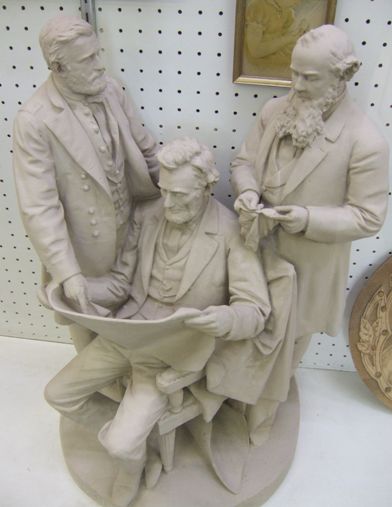 |
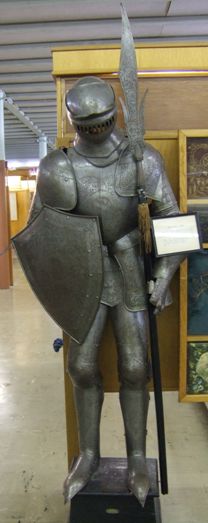 |
I think someone told Harold Warp that they had armour at House on the Rock,
so he had to have a set too. But just one. This is a 13th century knight's
armour which was brought to the US from an Italian castle by a soldier after
WWII. |
| After the displays of
clothing from the period Jan found a collection of quilts on display,
including this rather unusual one. It is made from pennants collected by
Harold Warp himself as he travelled the country trying to sell the products
from his factory, and he had them made into a quilt. | 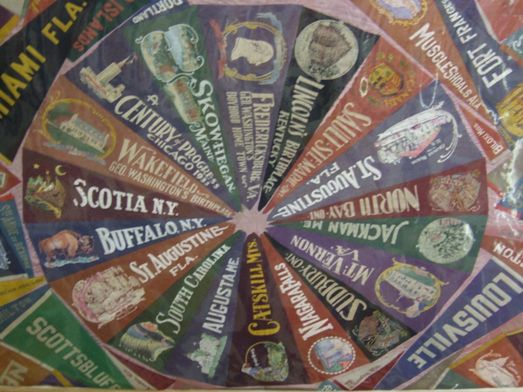 |
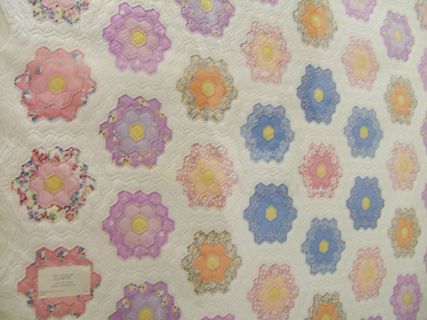 |
'Crazy' quilts were commonly made as thrifty housewives used up scraps of
fabric left from clothes and furnishings. This is a more symmetrical pattern
but each 'flower' contains different fabrics. |
| And finally one item from
the collection of paintings and sculptures of Native Americans: a painting
of 'Red Cloud', a Sioux chief and statesman whose land this was before the
white man came. | 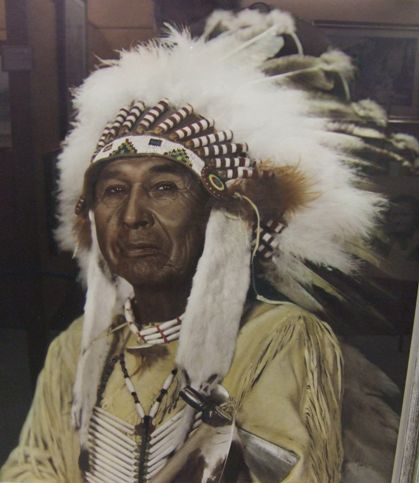 |
|